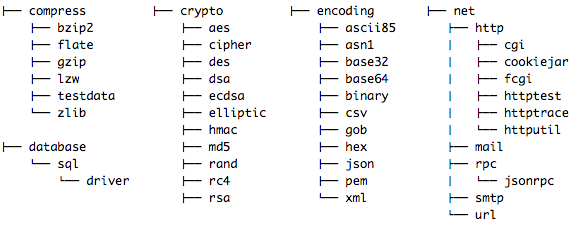The SOLID design principles of Object-Oriented Programming (OOP) apply to designing Go software solutions.
Single responsibility principle says, Do One Thing and Do It Well. We see the SRP at play in the Go standard libraries. Here're a few examples:

If a pull request enhances the aes/crypto package, would you expect that code merge to affect the functionality of the database/sql/driver package (or any package)? No. Of course not. Each package is clearly name spaced and highly cohesive; they perform specific tasks and do not cross over into other concerns.
"A class should have one, and only one, reason to change."
– Robert C Martin
When Mr. Martin said that a class should have only one reason to change, it's obvious that he was talking about OOP design, but the same principle applies to our Go application. Should the tax calculation update affect the user interface or layout of any reports, other than showing a different amount? No. Why...



